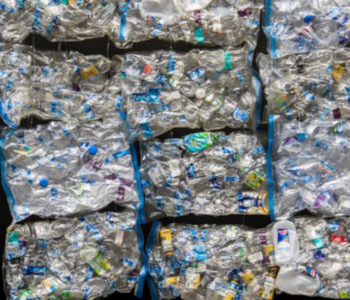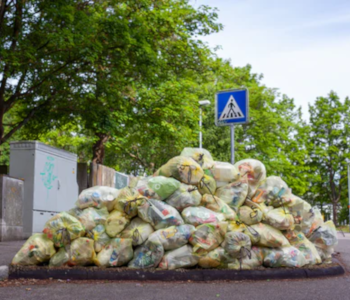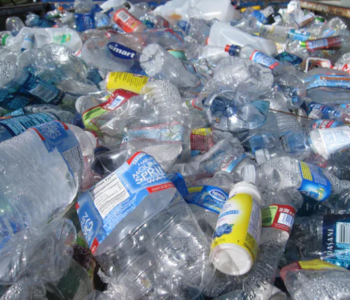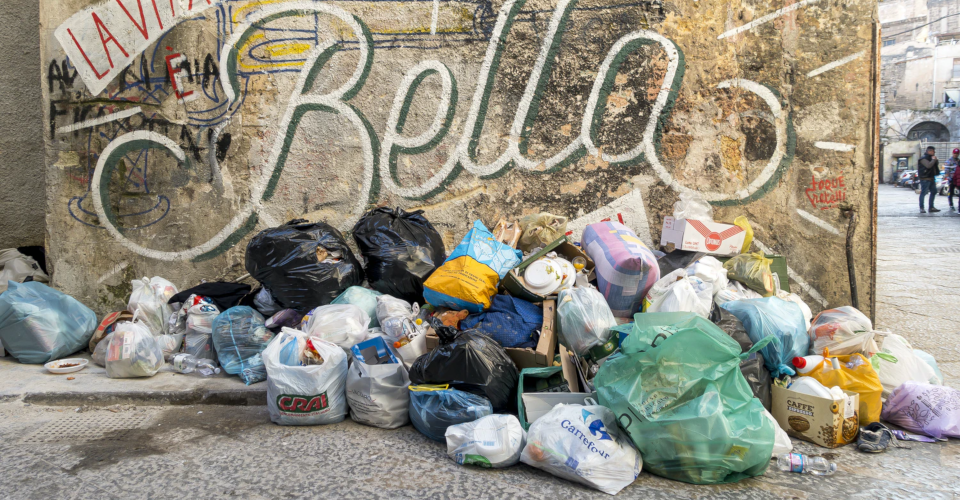The Plastic Waste Problem and The Challenges of Plastic Recycling
The accumulation of solid plastic waste continues to be one of the most pressing environmental problems we are facing today. The ever-growing consumption of goods packaged in plastic and the superior economics of plastic production has made this material an unavoidable part of our daily lives.
Fortunately, technology now exists to recycle plastic products. However, this technology also has several limitations. Despite plastic recycling becoming available, why does solid plastic waste continue to be a problem? Let’s look at the current state of plastic recycling, its challenges, and how people and groups around the world are working to address these challenges.
How bad is the plastic waste problem?
Cumulative plastic production
From the 1950s to 2015, the production of plastic products grew from virtually zero to about 350 million tons per year. This continuous increase has resulted in a cumulative total of 7.8 billion tons of plastic produced during this period, corresponding to more than one ton of plastic for each person alive as of the end of 2015.
Up until the 1980s, the idea of recycling plastic was unheard of. From the 1950s to the 1980s, plastics were either simply discarded into landfills or incinerated. From the onset of plastic recycling in the 1980s to the present, the portion of plastic products that were recycled increased by an average of 0.7% per year.
As of the end of 2015, a staggering 55% of all plastic products end up in landfills. This corresponds to about 4600 million tons of accumulated plastic waste over the years. About 700 million tons of plastic waste has been incinerated and about 2500 million tons remain in active use.
Of the entire volume of plastics that have been produced since the 1950s, only 500 million tons (roughly 6%) have been recycled. Of this portion, only 100 million tons remain in active use. The other 400 million tons have also ended up either getting discarded in landfills or incinerated. Around 3% of plastic waste produced annually ends up in oceans – or about 8 million tons by the end of 2015.
By use, packaging of goods constitutes the greatest volume of usage of plastic products at around 141 million tons. The next category has a volume of less than half – the building and construction industry at only 65 million tons. This emphasizes how heavily plastic production can be reduced by using non-plastic alternatives for product packaging.
Looking at the plastic production rates per country, China leads the pack by a huge margin at around 60 million tons. The US comes in at second at 38 million tons.
Mismanaged plastic waste

However, looking at the per country share of mismanaged waste paints a different picture and highlights how many countries lack the facility or initiative to recycle plastics. China still leads by accounting for about 28% of mismanaged plastics, but the rest of the group is dominated by countries in South Asia – Indonesia (10%), Philippines (6%), Vietnam (6%), and Thailand (3.2%). In fact, the East Asia and Pacific regions account for about 60% of the global total for mismanaged plastic waste.
The persistence of plastic waste and effects on wildlife and humans
The gravity of the problem of mismanaged plastics lies in the fact that they can persist for several decades, even if they eventually end up breaking down as microplastics. Based on studies conducted on plastic waste that has ended up in shorelines and coastal regions, researchers have found that around 79% of macroplastics are less than 5 years old.
However, plastic waste in offshore environments tells a different story. As a testament to how long plastics take to break down, macroplastics (> 200 mm) dating back to the 1950s and 1960s have been found. Moreover, there were also microplastic (< 4.75 mm) samples collected that can be traced to earlier than 1990. In fact, the actual longevity of some plastic products has not yet been determined, given that they have only been around for less than 70 years.
Plastic pollution in waterways has long been known to have caused the death of marine species either by ingestion or entanglement. Ingested plastic waste can greatly reduce the stomach capacity of animals or eventually cause perforation or rupture of the gut. The effects of microplastic ingestion have not been studied to great detail, but it has been linked to decreased metabolism and inhibited fertility.
As far as humans are concerned, plastic waste has also been found in the food that we eat. Most of these take the form of microplastics, although plastic fibers have also been detected in items such as salt, beer, or honey. To date, there has no concrete evidence of harmful health effects to humans of ingesting microplastics or ingesting animals with traces of microplastics. This is likely due to the fact that microplastics are often found in the gut or intestinal tract of animals – parts that humans typically do not eat.
Why are some countries lagging in the practice of plastic waste management?

Looking only at the statistics of plastic production per country, it’s easy to spot a trend of rich countries generating more plastic waste. Leading the pack are countries like Norway, the US, Singapore, Germany, Netherlands, Ireland, and Hong Kong. Low-income countries like India, Pakistan, Tanzania, Senegal, Myanmar, Haiti, Madagascar, and several dozen others have maintained a low per capita rate of generation of plastic waste.
However, this trend does not hold when we look at the data of mismanaged plastic waste per country. The trend appears to be skewed towards middle-income countries such as Sri Lanka, Maldives, Fiji, Egypt, Malaysia, and South Africa. Low-income countries do not generate a lot of waste per capita, while high-income countries have more developed plastic recycling facilities. In contrast, middle-income countries have undergone rapid industrialization but have failed to in developing their waste management technologies.
A more pronounced trend shows that mismanaged plastic wastes are concentrated in countries with large coastal populations. Notable examples include China, Indonesia, India, Nigeria, Brazil, Vietnam, and Bangladesh. This data emphasizes just how much of mismanaged plastic waste ends up in the ocean, further exacerbating its effect on marine life.
Current challenges of plastic recycling
We do not need to be confronted with the numbers for us to recognize just how big the plastic waste problem is. This is especially true of middle-income countries that have poor support for plastic recycling. In countries like China, India, Indonesia, Philippines, and Thailand, a cursory walk down any street will reveal plastic packaging that is not segregated in any form to prepare them for recycling.
The limitation in plastic recycling isn’t just limited to middle-income countries and those in coastal areas. Even in countries with well-developed plastic recycling facilities, there are still technological limitations that prevent them from attaining higher recycling rates. The following are some of the common challenges.
Economics
Putting up a recycling facility requires a lot of capital and technical capability. Its operations will also require huge operating costs in terms of power, manpower, and equipment maintenance. Significant capital will also have to be spent to implement a system for the collection and sorting of plastic waste.
With so many expenses involved, it is important for plastic recycling to be economically sustainable. This is determined by two factors – the market demand for recycled products and government support to incentivize or require plastic recycling.
There’s also the fact that plastic degrades in quality every time it is recycled, making it necessary for “recycled” plastic products to have a blend of both recycled and virgin materials to ensure good product quality. This also means that plastic cannot be recycled infinitely, unlike glass or metal.
This deficiency makes the economics of plastic recycling even worse. In many cases, manufacturing a product made of pure virgin plastic turns out to be cheaper blending in recycled materials.
Difficulty in sorting
Before plastic waste even reaches a recycling facility, there are two hurdles to overcome – the fact that not all plastics are recyclable, and not all recyclable plastics are fit to be recycled. For instance, common recyclable plastics include High Density Polyethylene (HDPE) and Polyethylene Terephthalate (PET). On the other hand, plastics such as Polystyrene (PS) and Polypropylene (PP) are still widely used but remain non-recyclable.
Even if recyclable plastics can be isolated at collection, they will still need to be sorted to make sure that they don’t cause problems with recycling equipment. Plastic to be recycled needs to be clean and free from food residue. Plastic bottles need to be crushed and have their caps removed.
There are also composite plastic containers that use two different plastics. These have to be either separated by hand or by special equipment. A classic example is the standard disposable coffee cup, which is made of paper and a thin film of polypropylene for water-resistance.
Sorting is a significant bottleneck in the plastic recycling process. Technology to help with plastic sorting continues to be developed. However, the sheer diversity of different plastic products remains to be a problem that is yet to be fully addressed.
Flexible packaging is difficult to recycle

Flexible plastic packaging such as plastic bags, films, and labels constitute a significant portion of daily plastic waste. However, they can also be very tough to recycle. Most material recovery facilities do not have the technology to process flexible packaging, which means that they often end up in landfills or get incinerated.
Weak policy support
A major part of why some countries have failed to adapt higher plastic recycling rates is a lack of government support to the initiative in the form of policy. This is the best way for plastic recycling facilities to overcome the disadvantage in economics compared to the continued manufacture and use of virgin plastics.
Legislation to support plastic recycling can range from outright banning of single-use plastics to setting required levels of recycled content in final goods. Some groups have also proposed requiring brands to display product labels that show recycled content, hoping that consumer-driven demand can act as the incentive to use more recycled material.
However, all these measures are moot if governments will not invest in the material recovery technologies. As we have gleaned, a plastic recycling facility is not as profitable as facilities that recycle metal or glass. With such low margins, it is up to the federal or local governments to jumpstart a plastic recycling program through a combination of policy and capital infusion.
Needs a collaborative solution
Plastic recycling is an entire system that relies on several moving parts for it to succeed. Product manufacturers need to come up with packaging solutions that are either biodegradable or more easily recycled. Consumers need to change their buying behaviors, favoring products that do not use non-recyclable plastics. Governments can also support reducing plastic waste either by taxing plastic products or providing incentives to companies that provide more sustainable solutions.
Even when a plastic recycling system has been put in place, it will require the cooperation of various stakeholders. Collection and sorting remain to be the most critical parts of the process, as it ensures that there is a constant stream of materials for the recycling plant to work with. However, it’s also a very difficult step as it needs cooperation at the level of the consumers. Behavioral change at such a massive scale is going to be a slow process and will require the support of environmental advocates and lawmakers.
Final thoughts
The peculiar thing about the plastic waste problem is the fact that just about every single person in the world knows about it and recognizes it. However, the level at which different people and different countries are invested in helping solve the problem vary greatly. To this day, it can be argued that there is not a single country that has attained a sustainable level of plastic manufacture, use, and recycling.
The process of plastic recycling is far from perfect. It’s expensive, requires a lot of work, and does not fully address the problem of plastic waste accumulation. However, it’s a good start and one we have to perfect before we can move on to more full-fledged solutions.

